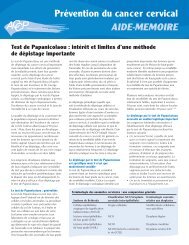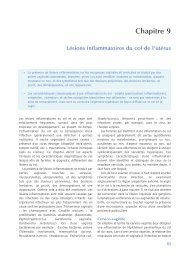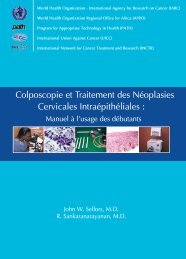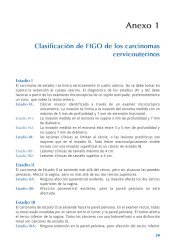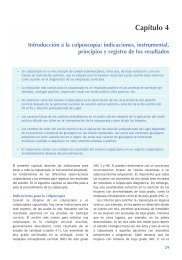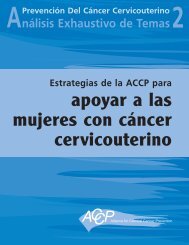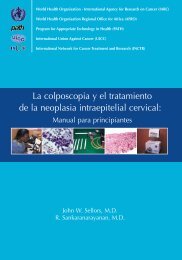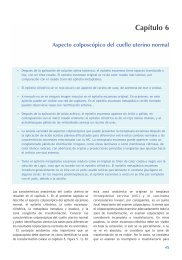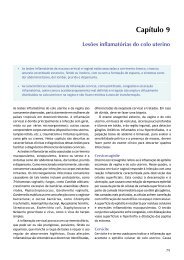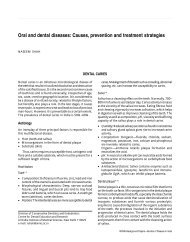Manual for Cytology - IARC Screening Group
Manual for Cytology - IARC Screening Group
Manual for Cytology - IARC Screening Group
You also want an ePaper? Increase the reach of your titles
YUMPU automatically turns print PDFs into web optimized ePapers that Google loves.
Cytopreparatory Techniques of Serous Effusions<br />
Processing<br />
Routine processing<br />
The fluid received is stirred briskly to disperse the suspended cells. A representative volume<br />
of the fluid (10 -15 ml) is centrifuged at 2500 rpm <strong>for</strong> 5 minutes. If possible glass tube<br />
should be avoided because of the disadvantages like tendency <strong>for</strong> cells to adhere to glass<br />
and possible breakage. The centrifuge tube must be meticulously cleaned to ensure a<br />
perfectly clean inner surface. If the quantity of fluid is too little <strong>for</strong> centrifugation, an equal<br />
amount of normal saline can be added be<strong>for</strong>e centrifugation. If fibrin clot has already<br />
<strong>for</strong>med, the clot may be smashed against the sides of the tube by using an applicator and<br />
if large clot remains, may be processed as cellblock. Place one to two drops of the sediment<br />
on the slide and allow it to spread evenly by placing another slide over it. Gently pull slides<br />
apart with an easy sliding motion to get alternate thick and thin area.<br />
Sparsely cellular Fluid<br />
Clear, sparsely cellular fluids yield scanty or no sediment after centrifugation at<br />
2000 rpm <strong>for</strong> ten minutes. Cytocentrifugation should be used <strong>for</strong> such cases. Cytocentrifuge<br />
concentrates small number of cells suspended in fluid specimens. Spinning samples at<br />
2000 rpm <strong>for</strong> 2 minutes sediments cells directly to slides. The blotter or filter card<br />
simultaneously absorbs the fluid medium. The result is a mono layer of well preserved<br />
cells with in an area of 6 mm. Major objection to the use of cytocentrifuge is the distortion<br />
of cellular morphology due to air drying artifacts, which can be avoided by immediate<br />
fixation or by using an equal volume of polyethylene glycol. The fluid is first concentrated<br />
by routine centrifugation at 2000 rpm <strong>for</strong> 10 minutes. Large portion of the supernatant is<br />
discarded leaving behind a few drops in the bottom of the centrifuge tube. This portion is<br />
stirred well and 2-5 drops (optimum 3 drops) are used <strong>for</strong> cytocentrifugation.<br />
Haemorrhagic Fluids<br />
Carnoy’s fixative is used to lyse RBCs in haemorrhagic fluids. Alternatively glacial acetic<br />
acid alone or saline re-hydration technique can be used in which the smears are rapidly<br />
dried at 37 o C <strong>for</strong> 5 minutes and re-hydrated in normal saline <strong>for</strong> 30 seconds and then<br />
fixed in alcohol fixative.<br />
Cell Block Preparation<br />
There are different methods of cellblock preparation like bacterial agar method, plasma<br />
thrombin clot method etc. An alternative method of cellblock preparation is a modified<br />
technique using AAF fixative (95% ethyl alcohol 34 ml + <strong>for</strong>malin 4 ml +Glacial acetic<br />
acid 2 ml).<br />
25



